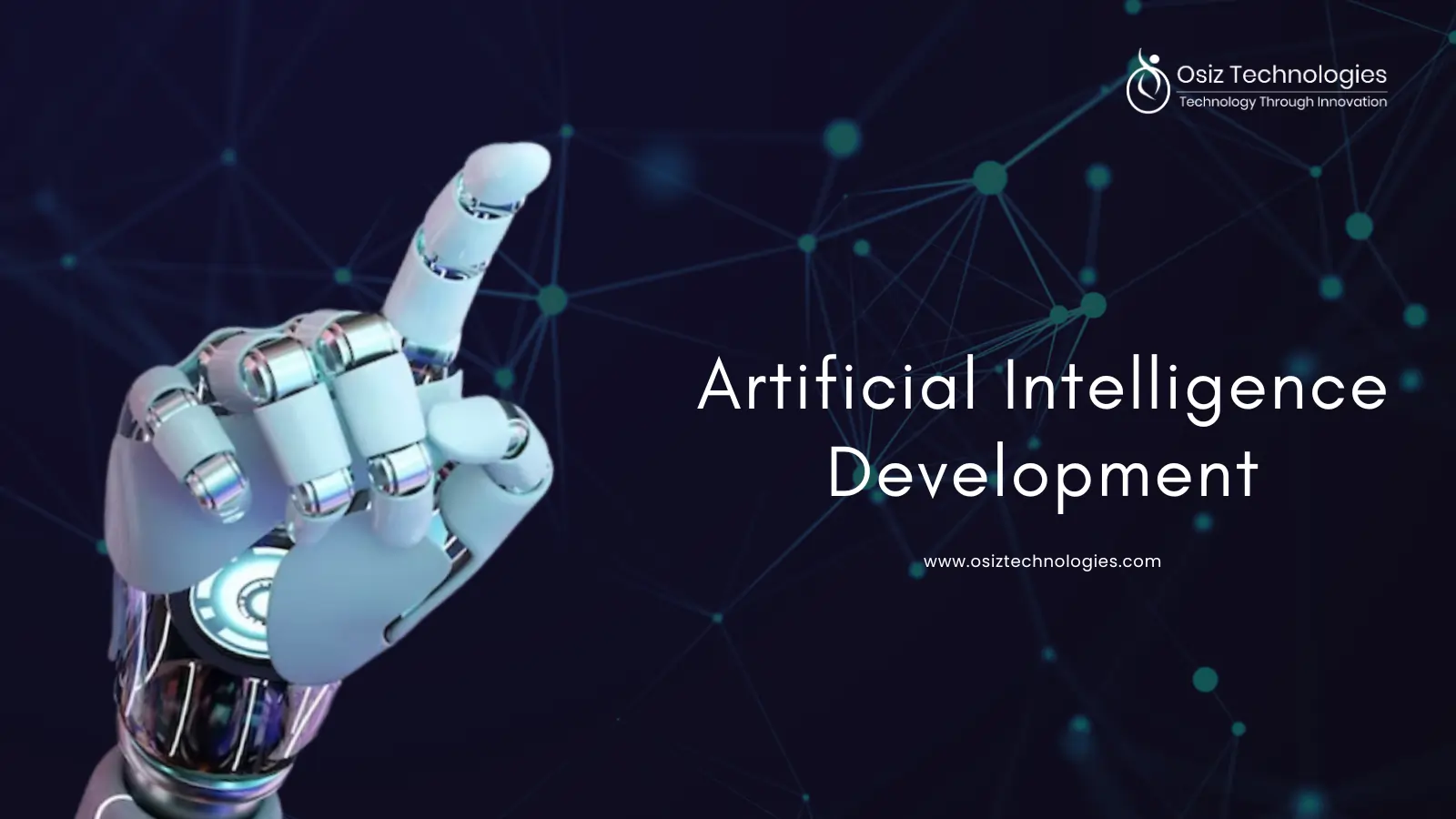Why Content-Based Recommendation Systems for Entertainment Platforms?
Changes in user expectations for entertainment content are afloat, transforming entertainment platforms. Here comes the role of content-based recommendation systems (CBRS), through which these platforms will be able to provide users with a modified experience. The ongoing evolution of such systems with the incorporation of advanced technologies such as Large Language Models (LLMs) makes them transform how users engage with content. This blog delves into the concept, advantages, mechanisms, and the future of LLM-driven CBRS for entertainment platforms.
This algorithmic solution is a content-based recommendation system, proposing content to users based on their preferences and attributes of items on which they engage. For entertainment platforms like streaming services, gaming apps, or online bookstores, these systems consider the features of available content—genres, actors, ratings, or themes—and match them with a user's consumption history. For example, if a user watches romantic comedies frequently, the system will recommend similar movies with related genres or actors.
How Does Content-Based Recommendation System Differs From Other Approaches?
Content-based recommendation systems differ from other approaches, such as collaborative filtering and hybrid systems, in several key aspects. CBRS is based on the analysis of features of items; for example, in entertainment platforms, these can be genres, actors, or different themes. It is matched against the individual preferences of each user. In contrast, collaborative filtering focuses on user behavior collectively, leveraging data on how different users interact with the content to identify the pattern. This approach gives better diversity but fails for new users or items, which is often referred to as the "cold start" problem. As opposed to that, CBRS handles cold starts for users very effectively by leveraging the inherent item-specific characteristics; though, it may result in less diverse recommendations with items too similar to the user's preferences. Hybrid systems combine elements of both content-based and collaborative filtering, yielding more balanced and comprehensive recommendations but at the cost of increased complexity. Generally, CBRS provides a transparent and personalized experience, making it suitable for scenarios where user-item interactions are sparse or when interpretability is necessary.
Importance of Content-Based Recommendation Systems for Entertainment Platforms
The role of CBRS is crucial for:
-
Audience Engagement: Personalization keeps users engaged, increasing time spent on the platform.
-
Monetization Opportunities: By aligning recommendations with user preferences, platforms can upsell premium content.
-
Brand Loyalty: Tailored content fosters trust and loyalty, encouraging subscription renewals.
-
Efficient Content Utilization: Platforms can push less-explored yet relevant content, optimizing their content libraries.
Understanding LLMs in Content-Based Recommendation Systems for Entertainment Platforms
Large Language Models such as OpenAI's GPT-4 and Google's PaLM fundamentally changed natural language processing, so a recommendation system can analyze textual data at much deeper levels of insight. They dig out subtle insights from user reviews, item descriptions, and metadata, thus providing a semantic understanding of content. LLMs are powerful in identifying themes and patterns, which other traditional algorithms can bypass. For example, they can pinpoint relationships between similar genres or even deduce latent sentiment from user comments. This capability makes them indispensable in creating highly personalized and context-aware recommendations for entertainment platforms.
How LLMs Are Transforming Content-Based Recommendation Systems in Entertainment Platforms?
LLMs provide transformative capabilities to CBRS through the ability to categorize content more intelligently and in more multi-dimensional ways. They can enrich user profiles through analyses of text-based data, such as comments and preferences, with a deeper understanding of their tastes. LLMs identify hidden content and user behavior patterns that allow platforms to recommend things people are not expecting but that are relevant, thus improving discoverability.
Improved Content Categorization: LLMs can categorize multi-dimensional features for smarter content categorization.
-
Richer User Profiles: Through analyzing user-generated content such as reviews, LLMs generate richer user profiles.
-
Enhanced Discoverability: They identify hidden patterns to surprise and delight users through recommendations.
-
Multimodal Recommendations: LLMs support recommendations across all content types such as movies, music, and games.
How to Use LLMs for Creating Content-Based Recommendation Systems for Entertainment Platforms?
-
LLM Training: Train an LLM on domain-specific data, such as movie descriptions or gaming narratives.
-
Feature Engineering: Employ the LLM to derive semantic features from content and user reviews.
-
Model Building: Construct a recommendation engine that utilizes LLM-derived features.
-
Testing and Validations: Evaluate the model for its accuracy and user satisfaction metrics.
Evaluation Considerations for Entertainment Recommendation Systems
Evaluating a CBRS, especially an LLM-driven one, is highly contingent on focusing on the following significant factors. Precision and recall metrics assess how accurately the system identifies relevant content and avoids irrelevant suggestions. Diversity is another important metric, ensuring that recommendations are not repetitive but varied. The thing to which it primarily pertains is user satisfaction; metrics such as engagement rates and feedback scores indicate effectiveness. Scalability is necessary for accommodating an ever-growing library of content and people without causing a notable degradation of performance. Finally, interpretability ensures users can understand the reasoning behind recommendations, hence fostering trust and transparency in the platform.
Enhancing Entertainment Platforms With Llm-Driven Content-Based Recommendation Systems
The integration of LLMs improves entertainment platforms by bringing niche or underexplored content to light, making overall content accessibility better. These systems promote user engagement through highly personalized and dynamic recommendations that resonate with individual tastes. Another good reason is reduced churn, as users tend to stay loyal once their needs are satisfied frequently. LLMs are also helpful to content creators, suggesting ideas that strike the right chords in the target audiences, therefore encouraging new innovative content creation. Altogether, these improvements will raise the value of the entertainment platform, ensuring user satisfaction and a competitive edge.
LLMs improve the following entertainment platforms
-
Content Accessibility: Bringing more obscure or less popular content into view.
-
User Engagement: Keep users actively discovering new content.
-
Lower Churn: Recommendation with personalization will keep subscribers subscribed.
-
Creative Collaboration: For the creators, LLMs can help come up with content ideas that would resonate with their audience's preferences.
Benefits of LLMs in Content-Based Recommender Systems
-
Deeper Insights: LLMs have a deeper semantic understanding that enables better identification of relevant content and better discovery.
-
Personalization at Scale: These models handle diverse and complex user bases, delivering tailored recommendations to a wide audience efficiently.
-
Flexibility: LLMs effortlessly adapt to evolving content types and trends, ensuring recommendations remain relevant and up-to-date.
-
Cross-Platform Recommendations: They enable seamless suggestions across various platforms, enhancing the overall user experience with interconnected content.
-
Better Accuracy: LLMs can interpret subtle aspects of data and, therefore, provide more accurate recommendations that have a greater impact on users' preferences.
Future Trends for LLMs in Entertainment Recommendation Systems
-
Real-time Personalization: LLMs will be used for real-time recommendations based on active user behavior.
-
Multi-Lingual Support: LLMs will allow for recommendations across multiple languages to reach a universal audience.
-
Augmented Reality (AR) Integration: Platforms using AR may use CBRS with LLM support for delivering AR experiences.
-
Ethical Suggestions: Bias-free and fair suggestions
-
Hybrid AI Models: LLMs integrated with other AI technologies for hybrid recommendation systems
Ending Notes
Content-based recommendation systems are critical to entertainment portals in delivering highly personalized and engaging user experiences. These systems ensure that relevant and accurate suggestions are provided by aligning content attributes with the preferences of the users through analysis. Osiz is a Leading LLM Development Company, who offers solutions for content recommendation systems and helps digital platforms accelerate user satisfaction, increase engagement, and lower churn. Our solution development expertise enables entertainment platforms to stay ahead in trends, connect diverse audiences, and provide value-driven content discovery for sustained success.
Listen To The Article
Recent Blogs

X-Mas 30%
Offer










